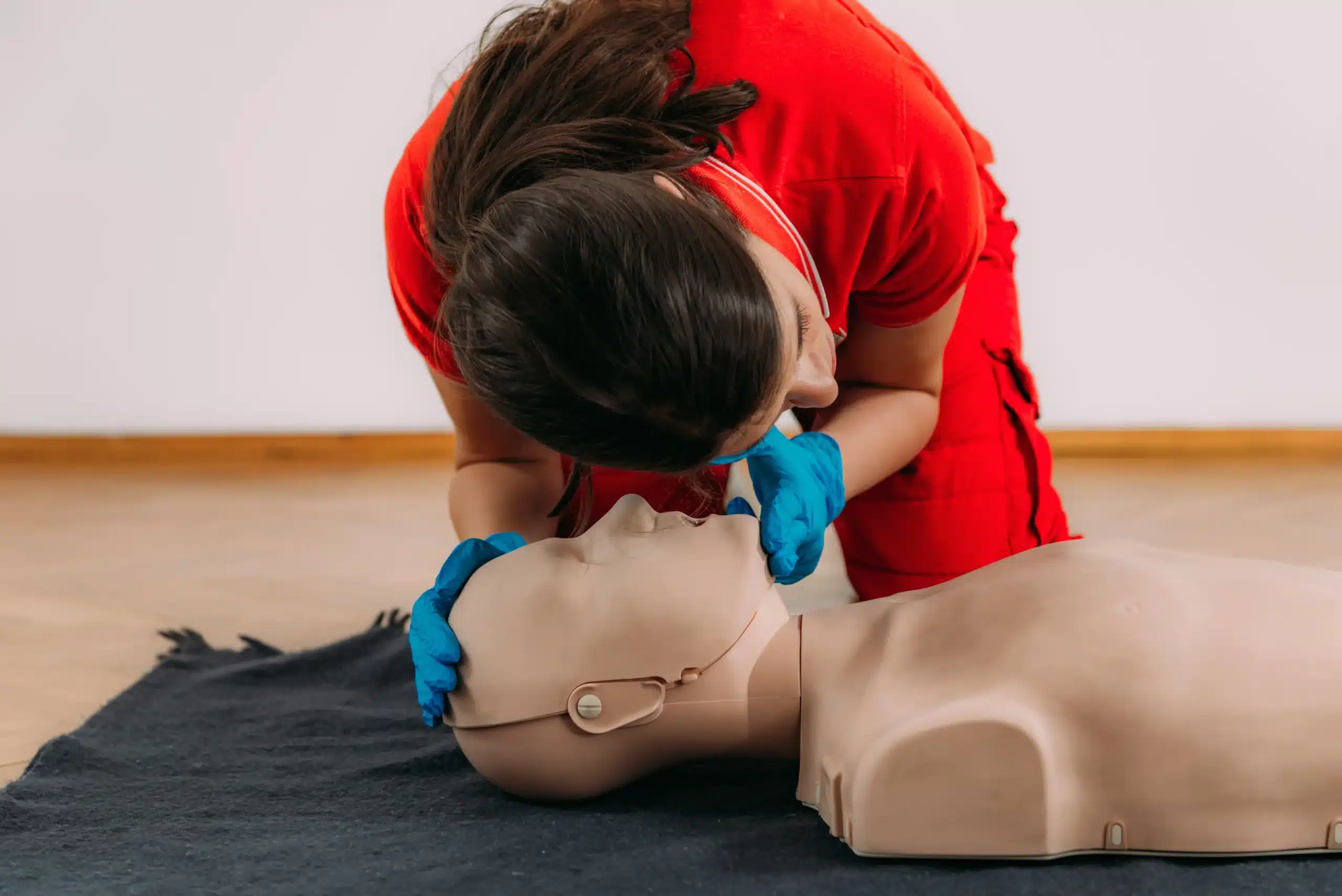CPR and first-aid training is crucial for workplace safety. This article explores the importance of such training, offering insights into its benefits, implementation strategies, and real-life impact.
The Foundation of Workplace Safety
First-aid training is more than a skill—it’s a lifesaver. Employees equipped with CPR knowledge can respond swiftly during emergencies. These skills are vital to workplace safety. They ensure that employees can act confidently in critical moments.
Understanding CPR and First-Aid Basics
CPR, or Cardiopulmonary Resuscitation, is a method to restore breathing and circulation. First-aid covers immediate care given to injuries or illnesses. Both are essential in handling emergencies before professional help arrives.
Learning CPR involves understanding chest compressions and rescue breaths. First-aid training includes wound treatment, fracture management, and shock response. These foundational skills are invaluable in emergencies.
Why Every Workplace Needs Trained Personnel
Trained employees can make a significant difference. In emergencies, quick response is crucial. CPR and first-aid training empowers employees to act decisively.
Having trained personnel reduces the severity of incidents. It also minimizes downtime due to injuries. A well-prepared team enhances workplace morale and safety culture.
Legal and Ethical Considerations
Employers have a duty of care to their employees. Providing CPR and first-aid training fulfills this obligation. Compliance with regulations ensures a safe work environment.
Understanding Legal Obligations
Different industries have specific legal requirements. OSHA mandates certain training standards in the U.S. Employers must be aware of their legal obligations. Meeting these standards is not just a legal requirement—it’s an ethical one.
For employers, compliance with legal standards is crucial. It protects them from potential lawsuits and ensures employee safety. Staying informed about legal requirements is essential for every business.
Ethical Responsibility
Beyond legality, there is an ethical responsibility. Providing CPR and first-aid training is part of creating a supportive workplace. It shows commitment to employee well-being.
Employers must prioritize training as part of their ethical duty. By doing so, they foster trust and confidence among employees. This sense of security boosts overall productivity.
Financial Implications and Benefits
Investing in training has financial implications. However, the benefits far outweigh the costs. Trained employees contribute to a safer, more efficient workplace.
Cost-Effectiveness of Training
Initial training costs might seem high. However, they lead to long-term savings. Reducing accident severity means lower medical expenses and insurance premiums.
Proper training minimizes workplace disruptions. It leads to fewer compensation claims. Overall, investing in training is financially prudent.
Productivity and Employee Morale
Training boosts employee morale. Employees feel valued and secure. This confidence translates into increased productivity.
A well-trained workforce is efficient and responsive. It handles emergencies without panic. This capability fosters a positive work environment.
Implementing a Training Program
A successful training program requires planning. It involves selecting the right courses and trainers. Implementation should be thorough and ongoing.
Choosing the Right Training Program
Many organizations offer CPR and first-aid courses. Selecting accredited programs ensures quality training. It’s crucial to choose courses relevant to the workplace environment.
Programs should accommodate all employees, including office and field staff. Regular refresher courses maintain skill levels. They ensure employees are always prepared.
Engaging Professional Trainers
Professional trainers provide expert instruction. They offer practical insights and hands-on experience. Engaging experts ensures comprehensive training.
Trainers should be experienced and certified. They must tailor sessions to the specific needs of the workplace. This customization makes training effective and relevant.
Real-Life Impact of Training
Training has tangible benefits. Real-life situations demonstrate its importance. Success stories highlight the life-saving potential of CPR and first-aid skills.
Case Studies and Success Stories
Several organizations have benefited from training programs. In emergencies, trained employees have saved lives. These success stories motivate others to prioritize training.
Documenting such cases provides valuable learning opportunities. They showcase the real-world impact of effective training. Sharing these stories encourages others to adopt similar practices.
Continuous Improvement and Feedback
Continuous feedback improves training programs. Employees should be encouraged to share experiences. This input helps refine and enhance training sessions.
Regular updates ensure training stays relevant. Adapting to new challenges keeps employees ready for any situation. Continuous improvement is key to successful training.
Creating a Culture of Safety
A culture of safety is essential for any organization. Training contributes to this culture. It encourages proactive behavior and mindfulness.
Fostering Awareness and Preparedness
Awareness is the first step to a safe workplace. Training fosters awareness and preparedness. It encourages employees to be vigilant and responsive.
Regular drills and exercises reinforce training. They keep employees alert and prepared. A culture of safety becomes ingrained in daily operations.
Encouraging Employee Participation
Active participation enhances training effectiveness. Encouraging employees to engage fully improves retention of skills. It fosters a sense of ownership and responsibility.
Participation should be incentivized. Recognizing employees who excel in training boosts morale. It reinforces the importance of safety in the workplace.
Conclusion – CPR & First-Aid Training
Workplace CPR and first-aid training is indispensable. It safeguards employees and enhances productivity. Implementing comprehensive programs ensures a prepared workforce.
For employers, training is a wise investment. It fulfills legal obligations and ethical duties. Most importantly, it saves lives.
By prioritizing training, organizations create a culture of safety. This commitment to employee well-being boosts morale and efficiency. Invest in training today for a safer tomorrow.






